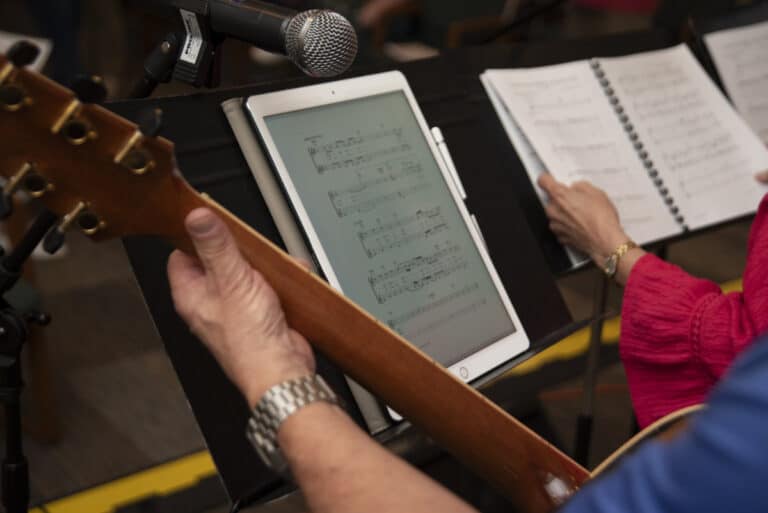Every ensemble has their favorite songs for liturgy — maybe because it’s a song the ensemble does well or perhaps several ensemble members have a story behind why they love the song. Regardless of the why behind the favorites, it’s sometimes good to break away from those favorites and expand the repertoire. One option is to learn new songs and introduce them to the congregation, but there’s also the option of using common hymn tunes to expand repertoire.
There are many factors to consider when planning music for liturgy, but three stand out the most:
- Is this selection appropriate for this liturgy?
- Does the ensemble know the piece?
- Does the congregation know the piece?
The answer should be “yes” to all three of these questions. If it’s not, we aren’t doing our best to support the congregation in full, active, and conscious participation in the liturgy.
When planning music for liturgy, many ensembles use the scriptural index in the back of their hymnal or an online music planning resource to identify potential songs for each week. At times, those resources might suggest a song that would be perfect for a liturgy, but it’s unfamiliar to the ensemble and/or the congregation. But is it really unfamiliar? Don’t give up and move on immediately simply because you don’t recognize the song name. (Yes, there’s always the option of teaching a new song to expand repertoire, and we’ll cover that in another article.)
Introduction to common hymn tunes
The melody of a hymn is called its tune. While some liturgical songs are a unique tune to that song only, there are also many common hymn tunes with different texts set to the same tune.
For example, “Amazing Grace” is set to the hymn tune called New Britain. “Love Divine, All Loves Excelling” uses the hymn tune Hyfrydol. These are two fairly well-known songs, but there are also less commonly known titles set to familiar hymn tunes.
Using common hymn tunes to expand repertoire
If the readings include 1 Peter chapter 2, your preparation resource might recommend the song “Church of God, Elect and Glorious.” You might initially skim over that suggestion because you don’t recognize the title. But take a moment to check that song in the hymnal, and you might be more familiar with it than you thought! That song is also set to Hyfyrdol, so if your ensemble and congregation are both familiar with “Love Divine, All Loves Excelling,” then “Church of God, Elect and Glorious” is free repertoire! Your congregation might feel a bit unsure when they first turn to that page, but by the time you get through an introduction, they’ll be ready to sing words that fit that specific liturgy yet are set to a familiar tune.
You can also take a more proactive approach to using common hymn tunes to expand repertoire. If your congregation sings a particular hymn tune well, check the hymn tune index in your hymnal or search online to see if there are other songs using that same hymn tune. If so, you can begin introducing additional options for a tune they love with words that fit the theme of that day’s readings.
Creating connection with common hymn tunes
Hymn tunes also benefit those who are visiting your community or who are converts to the Catholic faith. Old favorites in some Protestant traditions like “Come Thou Fount of Every Blessing” or “Brethren We Have Come to Worship” might not show up in a Catholic hymnal, but those songs are set to the Nettleton and Holy Manna tunes. In the Catholic hymnal, “As We Gather at Your Table” is set to Nettleton and “Come to Me” is set to Holy Manna — either of those songs could be a high point in someone’s week because the tune is familiar!
In closing, remember that the index of hymn tunes in your hymnal can expand your parish’s repertoire of hymns without your anyone needing to learn a new song from scratch. This can often be used to give the congregation something familiar as a backdrop to lyrics that help them be more fully present in the moment.
Written by Matthew Wesley, a volunteer choir member and cantor at Epiphany of the Lord Catholic Church in Oklahoma City and a CLEF volunteer.
Copyright © 2024 Catholic Liturgical Ensemble Formation
Looking for more resources? Search our full online library of CLEF Life resources, or sign up for CLEF Life email updates to receive the latest resource in your inbox once a week.



